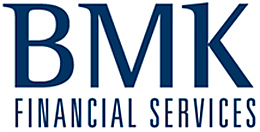Oliver’s Insights
Introduction
There has been much talk about the “search for yield” in investment markets. Investor interest in decent yield bearing investments has seen the price of such assets rise and their yields (or the cash flow they provide relative to their price) fall. This is clearly evident during the last three years. The chart below shows the yield available on various Australian assets today versus what they offered three years ago. All have seen a fall in their yields to varying degrees.

But what’s driving this? Is it a bubble? What warning signs should we watch? What does it mean for investors?
Why all the interest in yield?
The first thing to note is that interest in the yield or cash flow an investment provides is a normal part of investing. But it seems to become a greater focus at various points in time. This is particularly so when interest rates are relatively low and investors are a bit wary about going for growth. In Japan it’s become the norm as interest rates have stayed at/near zero for 15 years. In the US and Australia, yield focussed investing was in favour in the 1950s when interest rates were low and investors still cautious after the Great Depression and WW2. It became particularly apparent last decade as investors started putting more into yield plays like property, infrastructure and credit as bond yields remained relatively low only to be interrupted by the GFC. It has since returned with a vengeance. There are three main drivers:
- Low interest rates have pushed bank deposit rates and bond yields down, all of which is encouraging investors into higher-yielding alternatives.
- Reduced fear of economic meltdown has helped investors feel comfortable taking on more risk but with memories of the GFC and its aftermath still fresh, this is only in a cautious fashion. So there is a desire for the comfort provided by investments that get a high proportion of their return from income.
- Finally, aging populations are driving a longer term interest in yield. This started last decade as the first baby boomers moved into their pre-retirement phase and is intensifying now as they are starting to retire. This is driving demand for investments paying decent income in the form of dividends, rent, interest payments, etc. That said, trying to get a handle on the precise impact of this is nigh on impossible given increasing retirement ages and longevity driving a need for a decent growth exposure.
Is it structural or cyclical?
The safest option in investment markets is to assume something is cyclical (ie short term) rather than structural (ie long term) until proven otherwise. Demographic influences are clearly structural and long term. However, there is a structural aspect to low interest rates that cannot be ignored.
- First, to state the obvious, interest rates have been trending down with lower peaks & troughs since the 1980s.
- Second, the period of near zero/low global interest rates that has followed the GFC doesn’t look like it is about to end anytime soon. While the low global rates and easy money of the last few years have been constantly met with scepticism and concern about inflation and higher rates around the corner, the reality is that it hasn’t happened. We are now into the fourth year in a row where the hoped for lift off to above trend global growth has not happened. Global growth remains okay at around 3 to 3.5%, but it’s below trend and uneven with periodic flare ups of concern about recession and deflation as we have seen during the last month or so in relation to Europe. While it’s dangerous to say “this time it’s different”, quite clearly the world is different to the pre-GFC environment with excess levels of saving, spare capacity and more cautious attitudes to debt resulting in sub-par, uneven growth & low inflation/deflationary risks.
The impact of low bond yields
The logic of the chase for yield can be seen in relation to Australian commercial property (ie office, retail and industrial property). The next chart shows average commercial property yields relative to ten year bond yields. While commercial property yields have fallen over the last 34 years from an average of 8.3% to an average of 6.6%, the yield on bonds has literally collapsed. While the step down in bond yields was initially treated with scepticism on the grounds that “it’s just a bubble” or “inflation will soon take off forcing yields back up”, the longer it has persisted, thanks to sub-par growth and low inflation, the more investors have come to expect bond yields to stay down. So they increasingly invest in yield bearing alternatives such as property.

Faced with the choice of investing in a ten year government bond yielding 3.2% as they are in Australia now, or allocating to commercial property with a 6.6% average yield and capital growth of, say, 2.5% pa (ie inflation) giving a total return of 9.1%, an investor might well conclude the latter makes more sense. In fact, looked at this way the property risk premium – ie the return potential property provides over current bond yields – at about 5.9% is about as high as it ever gets.

And of course, the same logic can be applied to investment in assets such as infrastructure, shares and corporate debt.
But is the chase for yield on borrowed time?
Is it wise for investors to behave this way? Probably yes… until it goes too far, bond yields surge or growth disappoints.
Has it gone too far? Inevitably the search for yield will be pushed too far as it was last decade. Perhaps the greatest risks are seen to be around corporate debt where the gap between US investment grade and junk bond yields and US government bond yields has fallen to the range that prevailed prior to the GFC. However, credit spreads remained around these narrow levels for many years in the mid-1990s and mid-2000s before trouble arose. Nor have credit lending standards deteriorated like they did prior to the GFC.

In terms of equities, there has certainly been a narrowing in the gap between the forward earnings yield on shares and bond yields. But, as can be seen in the next chart, this gap – or a guide to the risk premium shares offer relative to bonds – still remains relatively wide compared to pre-GFC levels.

And finally for real assets (if commercial property is a guide), as indicated earlier, the risk premium offered by commercial property relative to bonds remains about as wide as it’s ever been. So overall, it’s hard to argue the search for yield has gone too far. That said, corrections like the one we have seen in shares and corporate debt markets during the last month are healthy in ensuring this remains the case.
What about the risk of an upswing in bond yields? The events of the last month, with renewed worries global growth and deflation, tell us that the immediate threat from higher interest rates is low. The US is closest to raising rates but global risks and a strong $US importing low inflation to the US could see that pushed out to the second half of next year. Australia is under no pressure to raise rates, with sub-trend growth and low inflation, and probably won’t start raising rates till after the US and for both it will be gradual. Rate hikes aren’t even on the horizon in Europe, Japan and China.
What about the risk of slower growth? Slower growth is perhaps a bigger risk globally, with the global economic recovery remaining fragile. In the absence of a major external shock or a major monetary tightening, however, it’s hard to see a sharp slowing in global/Australian growth.
What to watch?
Our basic assessment is that the search for yield hasn’t yet gone too far. Key indicators to watch for signs that it has include the following:
- Valuation indicators – such as price to earnings multiples and the gap between earnings yields and bond yields for shares, corporate bond yield spreads and the return premium property offers over bonds;
- Signs global growth is becoming more synchronised and picking up and that global inflation is rising as a guide to global monetary tightening.
- Global business conditions PMIs as a guide to whether growth is slowing again.
So far so good, but they are all worth keeping an eye on.
What does it all mean for investors?
While the yields and return potential across most assets has continued to fall, shares, non-residential property and infrastructure continue to offer better prospects than low-yielding cash, government bonds and term deposits. Some value has also been returned to corporate debt following the recent back up in corporate bond yields.
 Contact Brad Lonergan (Financial Planner) for more Investment advice in Newcastle.
Contact Brad Lonergan (Financial Planner) for more Investment advice in Newcastle.
0423 621 120 or email at brad@bmkfs.com.au

Dr Shane Oliver
Head of Investment Strategy and Chief Economist
AMP Capital
Important note: While every care has been taken in the preparation of this article, AMP Capital Investors Limited (ABN 59 001 777 591, AFSL 232497) and AMP Capital Funds Management Limited (ABN 15 159 557 721, AFSL 426455) makes no representations or warranties as to the accuracy or completeness of any statement in it including, without limitation, any forecasts. Past performance is not a reliable indicator of future performance. This article has been prepared for the purpose of providing general information, without taking account of any particular investor’s objectives, financial situation or needs. An investor should, before making any investment decisions, consider the appropriateness of the information in this article, and seek professional advice, having regard to the investor’s objectives, financial situation and needs. This article is solely for the use of the party to whom it is provided.







